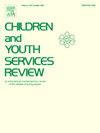大学生对打屁股作为儿童管教策略的看法
IF 1.7
2区 社会学
Q1 FAMILY STUDIES
引用次数: 0
摘要
体罚是一种儿童管教方法,照顾者故意对儿童施加痛苦,以回应儿童的行为。体罚的直接目的通常是改变孩子的行为。多个关注儿童健康和幸福的团体(例如,美国儿科学会)敦促父母使用替代管教方法,而不是打屁股。尽管有这样的建议,但研究表明,打屁股仍然是一种常见的惩戒行为——尽管一些研究确实表明,这种现象在几代人之间的流行程度有所下降。我们仍然需要了解打屁股的普遍程度以及影响人们对打屁股态度的因素。这项调查调查了一所多元化大学招收的271名学生,调查了他们小时候被打屁股的比率和把打屁股作为一种纪律实践的看法。研究了多种社会文化因素的影响,以及小时候被打屁股的历史与目前对打屁股的看法之间的关系。结果显示,大约70%的学生报告说自己小时候被打过屁股,这与移民或第一代美国人的身份和种族有关。此外,报告被打屁股的学生对将打屁股作为一种纪律做法持积极态度的比例在统计上显著更高。在旨在减少打屁股率的公共卫生运动的背景下讨论结果。本文章由计算机程序翻译,如有差异,请以英文原文为准。
University students’ perceptions of spanking as a child discipline strategy
Corporal punishment is a child discipline method in which a caregiver deliberately inflicts pain upon a child in response to child’s behavior. The immediate aim of corporal punishment is usually to alter children’s behavior. Multiple groups focused on promoting children’s health and well-being (e.g., The American Academy of Pediatrics) urge parents to use alternative discipline practices instead of spanking. Despite such recommendations, research suggests that spanking remains a common disciplinary practice—although some research does suggest that the prevalence has decreased across generations. There is still a need to understand the prevalence of spanking and the factors that impact attitudes toward spanking. This investigation examined rates of being spanked as a child and perceptions of using spanking as a disciplinary practice in 271 students recruited at a university with a diverse student body. The impact of multiple sociocultural factors and the relation between the history of being spanked as a child and current perceptions of spanking were examined. Results showed that approximately 70% of students reported being spanked as a child with some differences emerging from being an immigrant or first generation American and reported race. Additionally, students who reported being spanked had statistically significant higher rates of positive views towards using spanking as a disciplinary practice. Results are discussed within the context of public health campaigns aimed at reducing spanking rates.
求助全文
通过发布文献求助,成功后即可免费获取论文全文。
去求助
来源期刊

Children and Youth Services Review
Multiple-
CiteScore
6.30
自引率
6.10%
发文量
303
期刊介绍:
Children and Youth Services Review is an interdisciplinary forum for critical scholarship regarding service programs for children and youth. The journal will publish full-length articles, current research and policy notes, and book reviews.
 求助内容:
求助内容: 应助结果提醒方式:
应助结果提醒方式:


